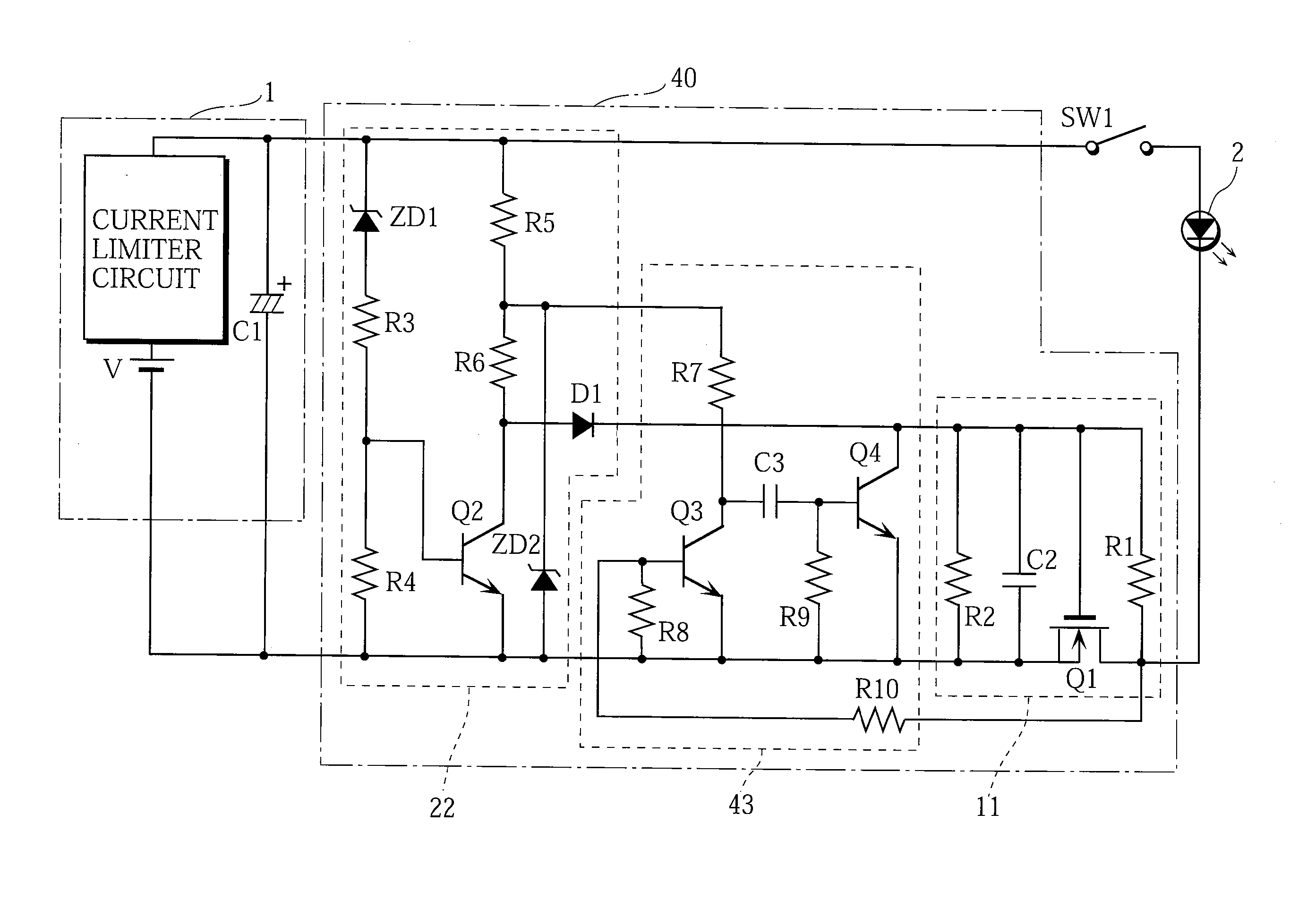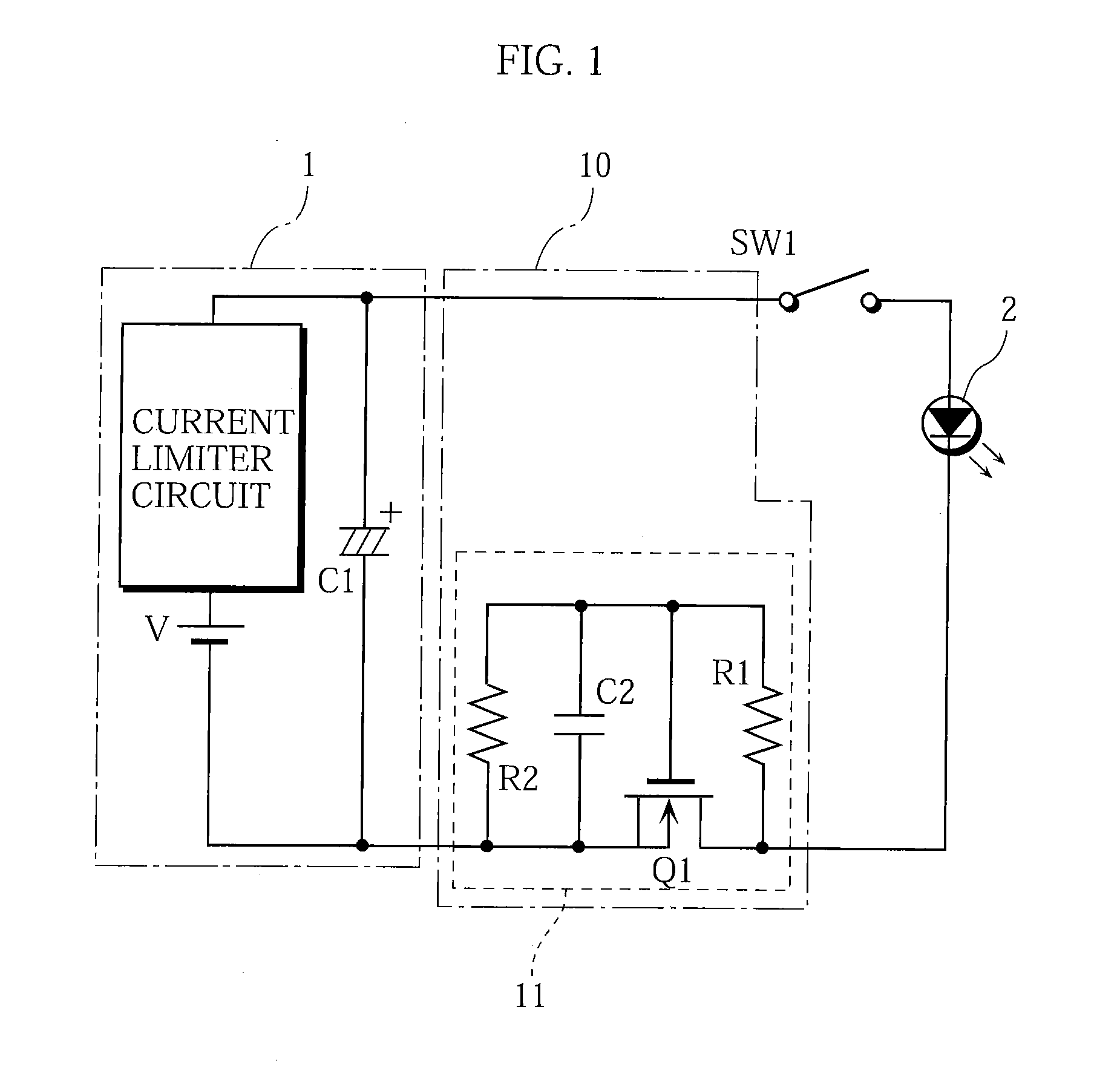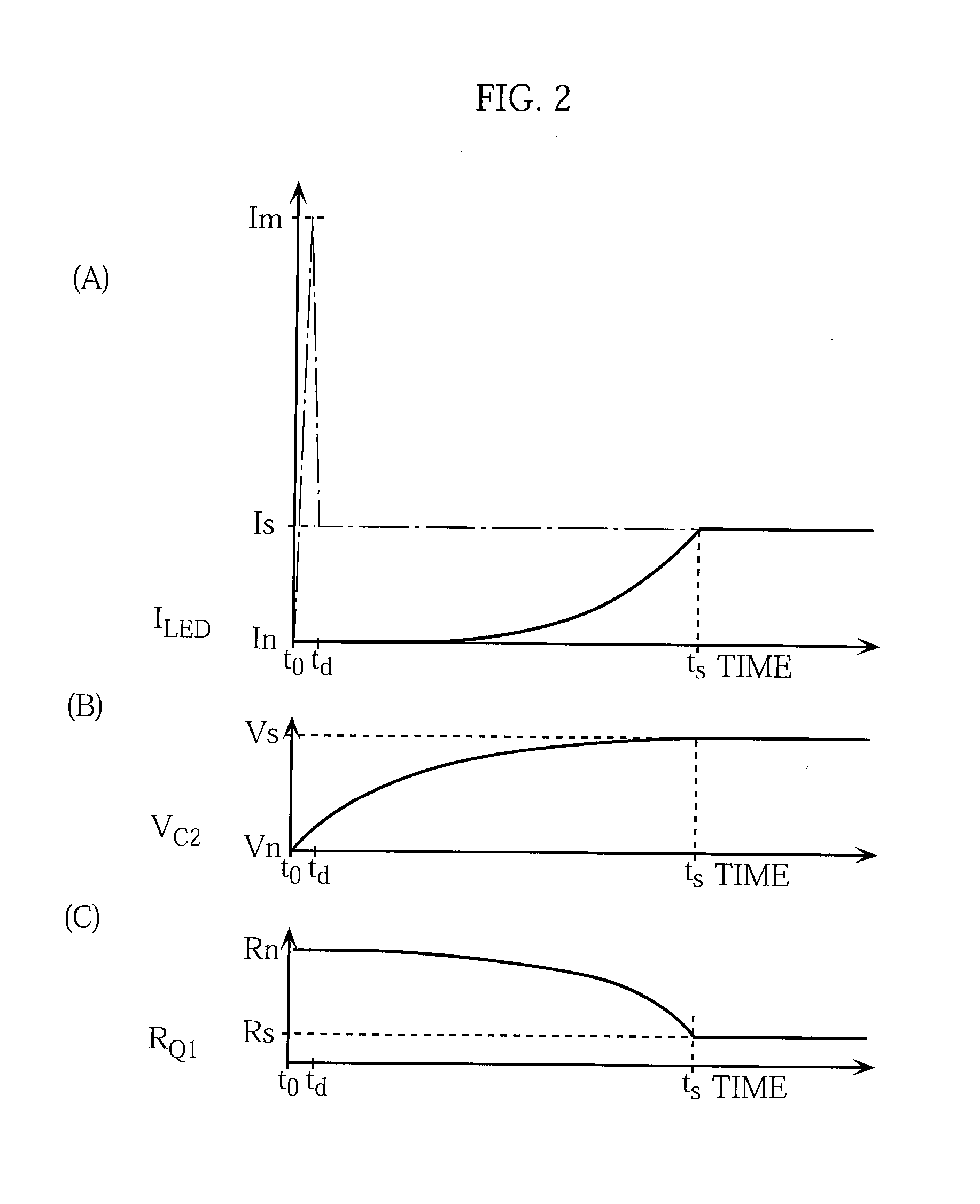Electric circuit
a technology of electric circuits and circuits, applied in emergency protective circuit arrangements, semiconductor lamp usage, etc., can solve the problems of increased energy loss, energy loss resulting from the load of inserted resistors or inserted current limiters, and reduce the energy loss resulting from the load of element breakdown prevention circuits. , to prevent the breakdown and deterioration of functional elements, the effect of reducing the energy loss
- Summary
- Abstract
- Description
- Claims
- Application Information
AI Technical Summary
Benefits of technology
Problems solved by technology
Method used
Image
Examples
embodiment 1
[0049]An element breakdown prevention circuit of Embodiment 1 will be described. FIG. 1 is a circuit diagram illustrating one example of the element breakdown prevention circuit according to Embodiment 1. FIG. 1 also shows a constant-current power supply 1 and an LED 2 along with the element breakdown prevention circuit 10. It should be noted that in FIG. 1, a switch SW1 is not a switch element that is provided separately from the LED 2 but is a virtual switch for representing a transition between the connected state and the disconnected state of the LED 2. An example is the case in which the electric circuit includes a first input / output terminal electrically connected to an output terminal (an upper wiring terminal) of the constant-current power supply 1, a second input / output terminal, an LED 2, and a socket (not shown) to which the LED 2 is detachably fixed, and by mounting the LED 2 to the socket, the first input / output terminal and the second input / output terminal are electric...
embodiment 2
[0064]An element breakdown prevention circuit according to Embodiment 2 has a configuration that can reduce the load due to the element breakdown prevention circuit itself in the steady phase of the connected state, in comparison with the element breakdown prevention circuit 10 according to Embodiment 1. FIG. 3 is a circuit diagram illustrating one example of the element breakdown prevention circuit according to Embodiment 2. The element breakdown prevention circuit 20 of the present embodiment has the same configuration as that of the element breakdown prevention circuit 10 (see FIG. 1) in Embodiment 1 above, except that it contains a resistance eliminating circuit 22. In the following description, the same parts as those in Embodiment 1 are denoted by the same reference numerals, and are not elaborated upon further.
[0065]The element breakdown prevention circuit 20 further includes a resistance eliminating circuit 22 (one example of the impedance decrease accelerating circuit: one ...
embodiment 3
[0074]An element breakdown prevention circuit 40 according to Embodiment 3 has a configuration that can prevent an LED (functional element) from breakdown and deterioration when mounting or demounting the functional element even if the transition from the connected state to the disconnected state or vice versa takes place a plurality of times at a very short time interval when mounting or demounting the functional element. FIG. 5 is a circuit diagram illustrating one example of the element breakdown prevention circuit according to Embodiment 3. The element breakdown prevention circuit 40 of the present embodiment shown in FIG. 5 has the same configuration as that of the element breakdown prevention circuit 20 (see FIG. 3) in Embodiment 2 above, except that it contains a resistance increase accelerating circuit 43 (one example of the impedance increase accelerating circuit: one example of a portion of the “voltage-dependent type switching-control circuit”). In the following descripti...
PUM
 Login to View More
Login to View More Abstract
Description
Claims
Application Information
 Login to View More
Login to View More - R&D
- Intellectual Property
- Life Sciences
- Materials
- Tech Scout
- Unparalleled Data Quality
- Higher Quality Content
- 60% Fewer Hallucinations
Browse by: Latest US Patents, China's latest patents, Technical Efficacy Thesaurus, Application Domain, Technology Topic, Popular Technical Reports.
© 2025 PatSnap. All rights reserved.Legal|Privacy policy|Modern Slavery Act Transparency Statement|Sitemap|About US| Contact US: help@patsnap.com



